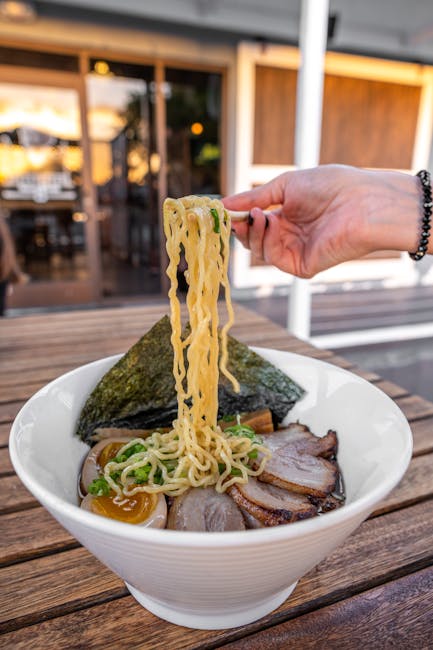What My Japanese Wife Really Buys at the Supermarket in Japan

What My Japanese Wife Really Buys at the Supermarket in Japan
Hey there, Konnichiwa friends! As a self-proclaimed "style-Japanese enthusiast," I'm constantly fascinated by the beautiful blend of functionality and aesthetics that permeates everyday life in Japan. And where better to witness this firsthand than at the local supermarket? Forget those sterile aisles and generic brands – a Japanese supermarket is a treasure trove of culinary delights and beautifully packaged essentials. Since marrying my amazing wife, Sakura, I've had a front-row seat to the inner workings of her grocery shopping habits. So, let's pull back the curtain and explore what she really buys at the supermarket in Japan – a glimpse into the heart of Japanese home cooking and everyday life.
It's more than just food; it's a ritual, a sensory experience, and a lesson in mindful consumption. So, grab your shopping basket (or perhaps a stylish reusable bag!), and let's dive in!
The Foundation: Dashi Ingredients

Sakura, like most Japanese cooks, understands the power of a good dashi. Dashi is the umami-rich broth that forms the foundation of countless dishes, from miso soup to simmered vegetables. Forget bouillon cubes; we're talking about real ingredients! Here's what she stocks up on:
- Kombu (Kelp): Thick, dried kombu sheets are essential. Sakura always chooses ones with a slight white powder (mannitol), which indicates high quality. She carefully wipes it clean before simmering, never washing it off completely – that's where the flavour is!
- Katsuobushi (Dried Bonito Flakes): These paper-thin, shaved bonito flakes are a cornerstone of dashi. Sakura looks for flakes that are a light pink colour and have a fresh, smoky aroma. We buy different grades depending on what she's cooking. For a delicate clear broth, the flakes are lighter. For a richer flavour, she'll use a darker grade.
- Iriko (Dried Sardines): Smaller dried sardines, usually used for a stronger, more rustic dashi, particularly in regional dishes. Sakura uses these less frequently, but always keeps a bag on hand for special recipes passed down from her grandmother.
The quality of these ingredients makes all the difference in the final dish. It's not just about the cost; Sakura prioritizes sourcing high-quality, natural ingredients that elevate the flavour profile and contribute to a healthier meal.
Rice, Glorious Rice!

Of course, no Japanese shopping trip is complete without rice! But it's not just any rice. Sakura is very particular about the variety and quality. It's more than just a side dish; it's the heart of the meal.
- Koshihikari: This is the king of Japanese rice. Sakura prefers Koshihikari from Niigata Prefecture, known for its exceptional sweetness and texture. When cooked perfectly, each grain is plump, slightly sticky, and has a beautiful sheen.
- Haiga Mai (Germ Rice): This is a partially milled rice that retains the germ, which is packed with nutrients. Sakura often mixes this with white rice for a healthier option without sacrificing too much flavour.
- Mochi Gome (Sweet Rice): Used for making mochi (rice cakes) and sekihan (red bean rice), this sticky rice is a must-have for special occasions and traditional treats. We always have some on hand, even if we don't have a specific use planned – inspiration often strikes!
Sakura stores our rice in a special airtight container to maintain its freshness and prevent it from drying out. It's a small detail, but it makes a big difference in the final product. And she always washes the rice meticulously before cooking to remove excess starch, resulting in perfectly cooked, fluffy rice every time.
The Vegetable Rainbow

Japanese cuisine is all about fresh, seasonal vegetables, and Sakura takes full advantage of the supermarket's vibrant produce section. It's a feast for the eyes! Here's a glimpse into her vegetable basket:
- Daikon Radish: This long, white radish is a staple in Japanese cooking. Sakura uses it grated in sauces, simmered in stews, or pickled for a refreshing side dish. She always chooses daikon that feels heavy for its size, indicating high water content.
- Nasu (Eggplant): Japanese eggplant comes in various shapes and sizes, from the long and slender to the round and squat. Sakura loves grilling them, pickling them, or using them in miso-based dishes.
- Shiso (Perilla Leaf): This fragrant herb adds a unique flavour and aroma to many dishes. Sakura uses it as a garnish, in salads, or wrapped around grilled meats. She looks for leaves that are vibrant green and free from blemishes.
- Negi (Japanese Leek): A type of long onion, used both raw and cooked. The white part is often used in soups and stir-fries, while the green part makes a beautiful and flavourful garnish.
- Shungiku (Chrysanthemum Greens): These slightly bitter greens are often added to hot pot dishes or used in salads. Sakura likes their unique flavour and the textural contrast they provide.
- Renkon (Lotus Root): With its distinctive holes, renkon adds a unique visual appeal to dishes. Sakura stir-fries it, simmers it, or deep-fries it for a crispy snack.
What's always impressed me is Sakura's commitment to sourcing seasonal produce. Not only does it taste better, but it's also more affordable and supports local farmers. She often adjusts her meal plans based on what's fresh and in abundance at the market.
Seaweed Sensations

Seaweed is an integral part of Japanese cuisine, packed with nutrients and umami flavour. Sakura always has a variety on hand:
- Nori: The thin, dried seaweed sheets used for making sushi and onigiri (rice balls). Sakura prefers nori that is dark green, slightly shiny, and has a crisp texture. She also uses it crumbled over rice or soups for added flavour and nutrients.
- Wakame: This sea vegetable is often used in miso soup and salads. Sakura looks for wakame that is a deep green colour and has a slightly slippery texture.
- Hijiki: A black, stringy seaweed that is often simmered in a sweet and savoury sauce. Sakura appreciates its unique texture and the depth of flavour it adds to dishes.
- Kombu (Yes, Again!): Besides using it for dashi, Sakura also uses kombu to make kombu tsukudani, a sweet and salty simmered dish that's delicious with rice.
Sakura is careful about storing seaweed properly to prevent it from becoming soggy or losing its flavour. She keeps it in airtight containers in a cool, dark place.
The Umami Arsenal: Soy Sauce, Miso, and More

Beyond dashi, several other key condiments and seasonings are essential for creating authentic Japanese flavours:
- Shoyu (Soy Sauce): Sakura has several different types of soy sauce on hand, each with its own unique flavour profile.
- Koikuchi Shoyu (Dark Soy Sauce): The most common type, used for general cooking and dipping.
- Usukuchi Shoyu (Light Soy Sauce): Lighter in colour and saltier than koikuchi, used to preserve the colour of delicate ingredients.
- Tamari Shoyu (Tamari Soy Sauce): A gluten-free soy sauce made primarily from soybeans, with a richer, more complex flavour.
- Miso: Fermented soybean paste, used to make miso soup and as a seasoning for various dishes. Sakura prefers artisanal miso with a rich, complex flavour. She loves experimenting with different types of miso, from the mild and sweet white miso to the bold and savoury red miso.
- Mirin: A sweet rice wine used for adding sweetness and shine to dishes. Sakura uses it in marinades, sauces, and glazes.
- Sake (Cooking Sake): Used for adding flavour and tenderizing meat and fish. Sakura prefers sake specifically designed for cooking, which has a lower alcohol content and added salt.
- Rice Vinegar: Used for making sushi rice and as a seasoning for salads and pickles. Sakura prefers rice vinegar made from brown rice for its slightly nutty flavour.
Sakura is meticulous about using the right condiment for the right dish, understanding how each ingredient contributes to the overall flavour profile. It's a skill that comes from years of experience and a deep understanding of Japanese cuisine.
Don't Forget the Little Luxuries

Beyond the staples, Sakura often indulges in a few "little luxuries" that elevate everyday meals:
- Tsukemono (Pickles): A wide variety of pickled vegetables, from crunchy cucumbers to spicy radishes. Sakura loves the refreshing and palate-cleansing qualities of tsukemono.
- Furikake: A dry seasoning sprinkled over rice, typically containing seaweed, sesame seeds, and other flavourful ingredients. Sakura always has a few different varieties on hand, adding a pop of flavour and texture to our meals.
- Tofu: Silken, firm, aburaage (fried tofu pockets) - the variety is astounding. She makes sure to buy it from places that prioritize quality soybeans.
These small additions can transform a simple meal into a more complete and satisfying experience. They are a testament to the Japanese appreciation for small details and the pursuit of culinary perfection.
A Word on Presentation

It's not just about what Sakura buys; it's also about how it's presented. From the beautifully designed packaging to the artful arrangement of ingredients on the plate, presentation is key in Japanese cuisine.
Sakura always pays attention to the colours, textures, and shapes of the ingredients, carefully arranging them to create a visually appealing and harmonious dish. She understands that food is not just about taste; it's also about engaging all the senses.
For example, she might use a sprig of shiso to add a pop of green to a dish, or arrange slices of daikon radish in a fan shape to create a visual focal point. These small details elevate the dining experience and demonstrate a deep respect for the ingredients.
More Than Just Groceries: A Cultural Immersion

Shopping with Sakura at the Japanese supermarket is more than just a chore; it's a cultural immersion. It's a chance to learn about new ingredients, discover new flavours, and appreciate the Japanese philosophy of mindful consumption.
I've learned so much from her about the importance of sourcing high-quality ingredients, the art of flavour balancing, and the power of presentation. It's a continuous learning experience that enriches my life and deepens my appreciation for Japanese culture.
So, the next time you find yourself in a Japanese supermarket, take a moment to explore the aisles and appreciate the beauty and craftsmanship that goes into every product. You might just discover a new ingredient or a new culinary tradition that will transform your own cooking.
Sayonara for now, and happy shopping!
Post a Comment